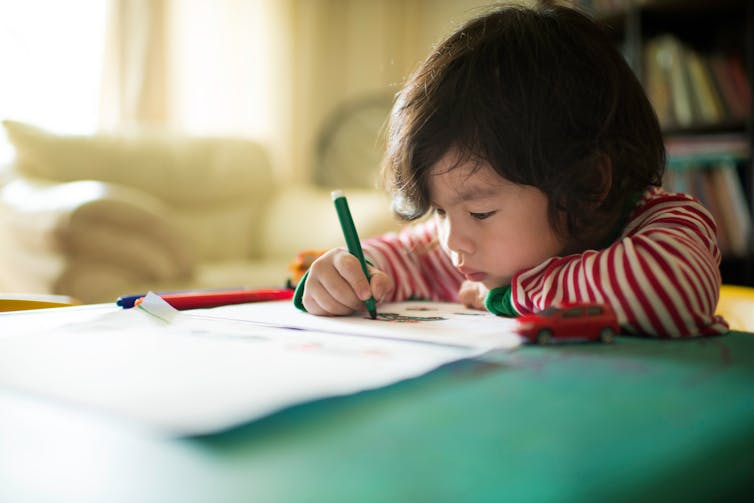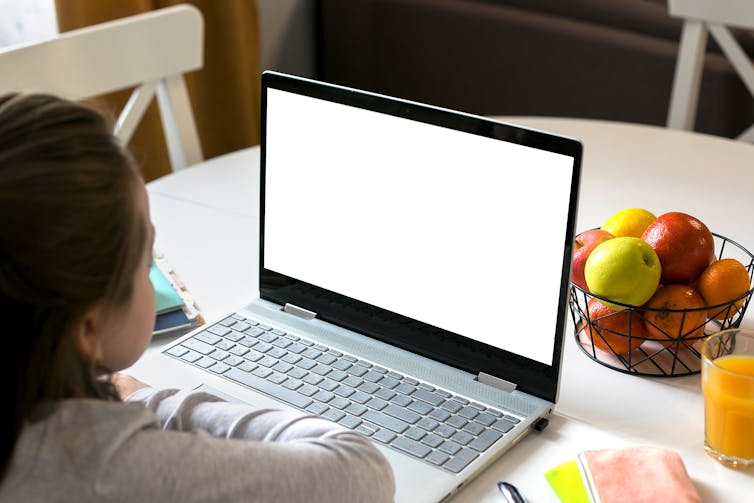Coronavirus school closures impact 1.3 billion children – and remote learning is increasing inequality

More creative thinking is needed. Shutterstock
COVID-19 is disrupting education on an unprecedented scale. At the time of writing, UNESCO estimates that nearly 1.3 billion pupils have experienced school closures across 186 countries. And this is already leading to growing inequalities.
In countries with high levels of digital penetration, governments have sought to rapidly replace physical attendance at school with virtual education, trying to find ways to minimise the effects of the disruption on educational achievement.
Such efforts to provide continuity in children’s education are laudable, but in the absence of any test-runs for such an extraordinary social experiment it’s unsurprising that online learning experts have rung alarm bells. Though some countries are gradually allowing young people back to school, technology will likely continue to feature heavily.
The dominant model of education in the time of COVID-19 seems narrowly focused on digital content delivery to individuals, with laptops rather than phones the assumed means of access. Remote contact with schools and teachers may be all that is possible right now, but that doesn’t mean that online classes or e-mailed worksheets are the only options.
Digital access
Consider first the focus on digital devices for learning. To technology-reliant policymakers, computer-enabled learning will seem like an obvious choice. But even affluent western countries experience disparities in digital access.
Not every household has even one usable computer, and if they do, may need to share such resources across the family. In the UK, for example, as the Sutton Trust recently noted, some teachers are teaching classes where as many as a third of all pupils may lack access to either a digital device or adequate internet connectivity.
In the face of such disparities, rather than adjust the mode of provision, well-meaning governments have elected to deliver laptops and routers to pupils in need. But research has repeatedly shown that simply handing out devices is insufficient to ensure meaningful use of technology.
Such schemes rarely provide young people or their families with much needed support to develop their digital skills. Instead, a common strategy is to place strong filters on devices – leading to a locked-down digital environment that can be demotivating and negatively impact use in the longer term.
Many schemes also employ a model where devices are borrowed and internet connection is provided free of charge for a short period of time. Such an approach reduces young people’s sense of control over their use of technology and risks causing financial stress if families feel pushed into continuing with an internet connection they cannot afford.
Additional pressures such as the unequal burden of data costs faced by those on the cheapest contracts, or inequalities in levels of parental support for learning are examples of this complexity. Research consistently illustrates that the benefits of using technology vary widely, with the better off tending to benefit more educationally and socially.

A move to online teaching and learning may well suit schools in more affluent catchment areas (and private schools in particular) but is a much less satisfactory option for schools serving more deprived areas.
It will inevitably lead to a greater disparity in educational outcomes at the end of lockdown as the inequalities in our school system and wider society are exacerbated by the current crisis. Promoting remote schooling as “digital by default” does not serve all children equally well and may do some a great injustice.
Alternative approaches
One alternative would be for schools to make the best use of all available communication means. International organisations used to dealing with the realities of uneven digital participation have pointed to other options, such as using televisions to deliver educational programming, low-bandwidth options such as radio or podcasts, as well as education tools that work well on phones rather than laptops. Such provision may still leave some children at a disadvantage, but it would still be a big step forward.
In many policy circles, the role of schools is often viewed in quite narrow, primarily economic terms, and students are expected to acquire skills that make them competitive in the workforce. But the role of schools is actually far richer and more complex, and involves developing a wider set of knowledge, so young people learn about the society they are part of, their culture and develop a sense of self. This cannot be achieved solely through the delivery of digital content.
Governments around the world task schools with a responsibility to address social inequalities. Although many rightly contest the extent to which these responsibilities are reasonable or appropriately framed, schools play an important role. They feed children, identify those at risk, support and protect them and enable children’s rights.
No one can be certain of what the next few months hold, but in trying to find ways to educate young people it is important to avoid narrow technological solutions and instead ensure that we design and use technologies in ways that promote broader social good rather than exacerbate inequalities.
![]()
Victoria Nash, Deputy Director and Policy and Research Fellow, University of Oxford and Rebecca Eynon, Senior Research Fellow and Associate Professor, University of Oxford
This article is republished from The Conversation under a Creative Commons license. Read the original article.
Oxford is a subscribing member of The Conversation. Find out how you can write for The Conversation.


